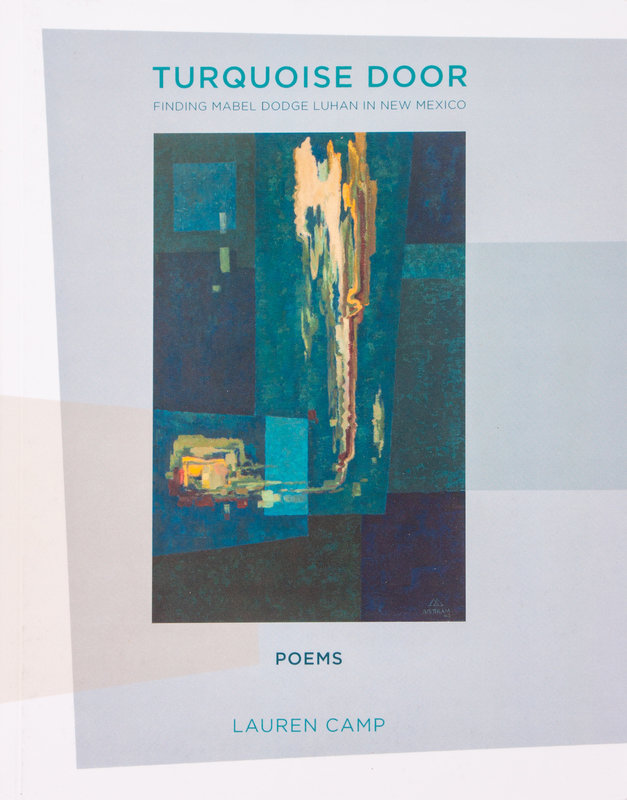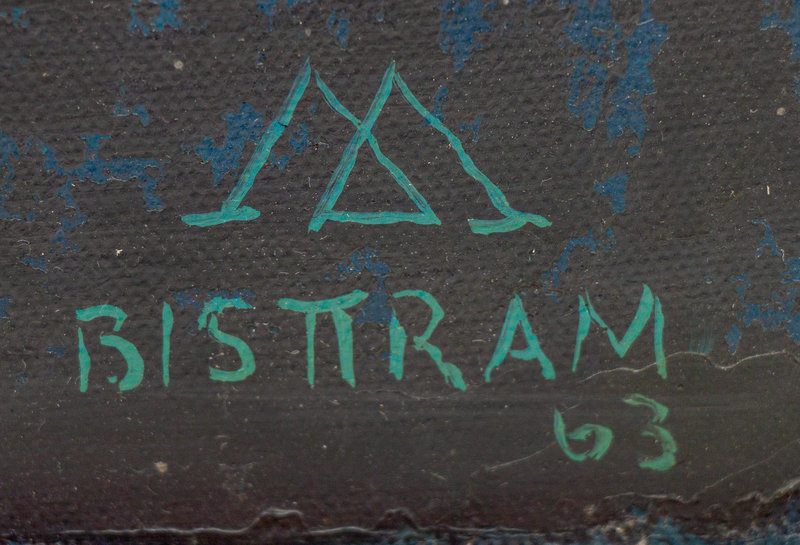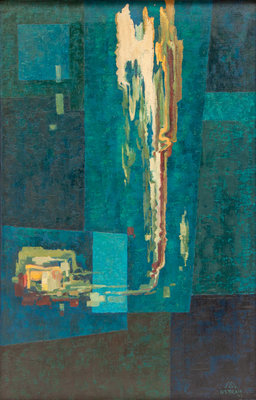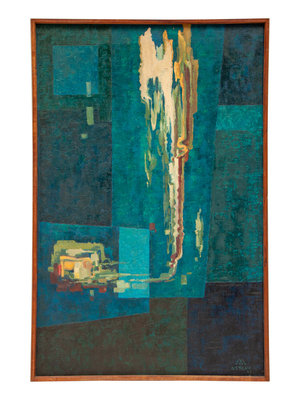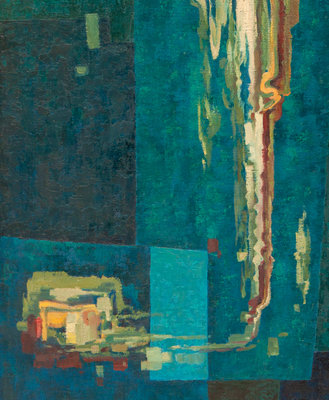Emil Bisttram
(American, 1895-1976)
Sublimation, together with book Turquoise Door: Finding Mabel Dodge Luhan in New Mexico
, 1963
Sale 1031 - Western & Contemporary Native American Art
May 19, 2022
10:00AM MT
Live / Denver
Estimate
$4,000 -
$6,000
Own a similar item?
Request An Estimate
Sold for $10,000
Sold prices are inclusive of Buyer’s Premium
Lot Description
Emil Bisttram
(American, 1895-1976)
Sublimation, together with book Turquoise Door: Finding Mabel Dodge Luhan in New Mexico
, 1963oil on canvas
signed Bisttram (lower right)
40 x 26 inches
Illustrated:
Lauren Camp, Turquoise Door: Finding Mabel Dodge Luhan in New Mexico, Poems, Denver, Colorado, 2018
When Emil Bisttram first visited New Mexico in 1930, he was overwhelmed by the seemingly endless scenery, the shocking brightness and the expansive landscape. Having spent the most formative years of his life in New York city, surrounded by bustling people and ever-growing buildings, this hardly seems surprising. He would soon fall in love with the New Mexican landscape, though. With an education that included the National Academy of Art and Design, Cooper’s Union and The Art Student’s League, Bisttram had some of the most important names of the early 20th century art world on his resume. Even with his impressive east coast credentials, though, it was in the American Southwest where he found his renown.
Bisttram had the skills and wherewithal to make a living and earn the respect of the art community of early 20th century New Mexico with his representational art. Still, his true passion was abstract art. Free from the confines of representing the natural world, he employed Dynamic Symmetry and the Golden Ratio to create highly organized, totally unstructured works of abstraction. Bisttram believed that creative endeavors should be life-affirming, and he used color, space and light in his nonobjective art to help stimulate deep thought and induce spiritual epiphanies.
For decades prior to Emil Bisttram’s arrival, New Mexico had attracted some of the Southwest’s most accomplished artists including Joseph Henry Sharp, Eanger Irving Couse, Bert Geer Phillips and Ernest Martin Hennings. There was a reverence for representational, academic art that was felt throughout the New Mexican art scene. Bisttram’s use of a modern, totally nonobjective aesthetic certainly ruffled feathers amongst the academicians and critics. Still, this dramatic, new style brought a fresh and positive impact to the Southwest that can still be felt today.
Condition Report
Overall good condition. One area of craquelure developing in deep impasto in white pigment. No detectable repairs or losses. Framed dimensions: 41 1/4 x 27 1/4 inches.
The physical condition of lots in our auctions can vary due to
age, normal wear and tear, previous damage, and
restoration/repair. All lots are sold "AS IS," in the condition
they are in at the time of the auction, and we and the seller make
no representation or warranty and assume no liability of any kind
as to a lot's condition. Any reference to condition in a catalogue
description or a condition report shall not amount to a full
accounting of condition. Condition reports prepared by Hindman
staff are provided as a convenience and may be requested from the
Department prior to bidding.
The absence of a posted condition report on the Hindman website or
in our catalogues should not be interpreted as commentary on an
item's condition. Prospective buyers are responsible for
inspecting a lot or sending their agent or conservator to inspect
the lot on their behalf, and for ensuring that they have
requested, received and understood any condition report provided
by Hindman.
Please email [email protected] for any additional information or questions you may have regarding this lot.


